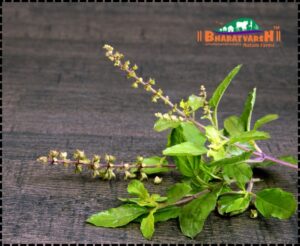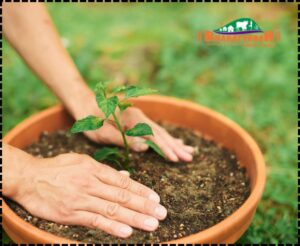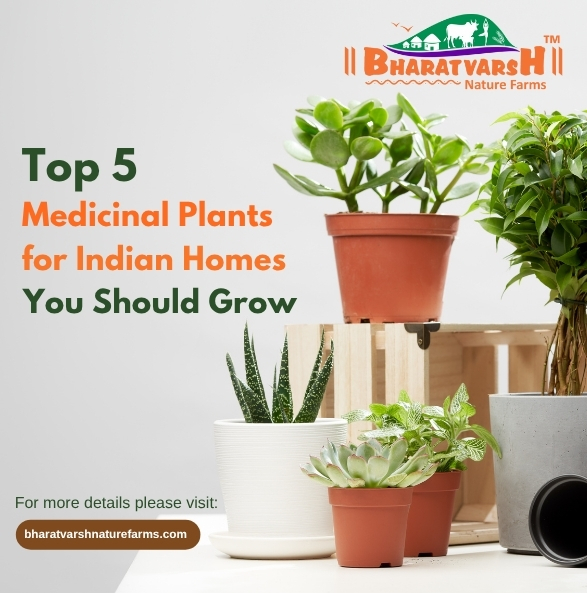In the fast-paced world we live in, where synthetic solutions often overshadow traditional wisdom, there’s a quiet resurgence happening-Indian households are returning to nature. One beautiful expression of this return is through growing Medicinal Plants for Indian Homes. Not only are they easy to cultivate, but these homegrown medicinal plants can also become your first line of defense against everyday ailments-naturally and safely.
At Bharatvarsh Nature Farms, we’ve seen firsthand how incorporating a few pots of Ayurvedic plants for home garden has transformed urban balconies and backyards into havens of health and healing. In this blog, we explore the top 5 medicinal plants every Indian home should grow, their benefits, and how you can get started on your own Indian kitchen garden.
Why Grow Medicinal Plants for Indian Homes?
Home-grown herbal remedies have a unique charm and power:
- Freshness and potency: You harvest exactly what you need.
- Traditional efficacy: These plants are part of timeless Ayurvedic wisdom.
- Sustainable & eco-friendly: Avoid store-bought packaging and shipping.
- Economical: Once established, they offer years of benefits at low cost.
Simply put, growing Medicinal Plants for Indian Homes transforms your garden into a living pharmacy-tailored to your family’s needs.

1. Tulsi (Holy Basil) – The Queen of Herbs
Tulsi, or Holy Basil, tops the list of common medicinal plants in India. Revered in Ayurveda and in Indian homes alike, this plant is known for its immune-boosting properties and spiritual significance.
Key Benefits:
- Fights cold, flu, and infections.
- Supports respiratory health.
- Acts as a natural insect repellent.
Growing Tips:
- Needs 4–6 hours of sunlight.
- Water moderately.
- Can be grown in pots or garden beds.
Tulsi embodies the essence of natural remedies from garden and is a classic example of how homegrown medicinal plants can offer daily health benefits.
You’ll often find it featured in Ayurvedic plants for home garden recommendations, especially for Indian kitchen garden plants setups.
2. Aloe Vera – Nature’s First-Aid Kit
Next on the list of Medicinal Plants for Indian Homes is the ever-popular Aloe Vera. Known globally for its cooling gel and healing properties, Aloe Vera is perfect for Indian weather.
Key Benefits:
- Treats burns, cuts, and skin irritations.
- Improves digestion and detoxification.
- Excellent for hair and skincare.
Growing Tips:
- Thrives in dry conditions.
- Water sparingly; prefers well-drained soil.
- Keep in sunny spots, like windowsills or balconies.
Whether it’s part of chemical-free skincare or an ingredient in natural remedies from garden, Aloe Vera ticks every box.
It’s one of the best herbal plants for Indian climate, especially if you’re starting your journey in herbal gardening in India.
3. Mint (Pudina) – Refreshment in Every Leaf
Mint is not only an essential culinary herb but also a star in healing plants to grow at home. Loved for its refreshing aroma and taste, Mint offers much more than just flavor.
Key Benefits:
- Eases indigestion and nausea.
- Acts as a natural mouth freshener.
- Relieves headaches and skin inflammation.
Growing Tips:
- Grows quickly in containers.
- Needs partial shade and regular watering.
- Snip regularly to encourage fresh growth.
From your Indian kitchen garden to your teacup, Mint is a go-to herb. It also supports chemical-free plant care, helping families live closer to nature.
4. Neem – The Natural Healer
Among the most potent medicinal herbs for health, Neem has earned its reputation over centuries. Its antibacterial and antifungal properties make it a staple in Indian households.
Key Benefits:
- Purifies blood and skin.
- Acts as a natural pesticide.
- Treats dandruff, acne, and minor infections.
Growing Tips:
- Requires ample sunlight.
- Needs well-drained soil.
- Can be grown as a small tree or bonsai-style in containers.
Neem represents Ayurvedic plants for home garden at their finest. If you’re focusing on eco-friendly farming methods or want to reduce chemical usage at home, Neem is non-negotiable.
5. Curry Leaves (Kadi Patta) – Flavor & Fitness
Often ignored in favor of flashier herbs, Curry Leaves are essential for both culinary and medicinal purposes.
Key Benefits:
- Controls blood sugar levels.
- Boosts hair health
- Improves digestion and eyesight.
Growing Tips:
- Requires sunlight and regular watering
- Prune regularly to encourage leaf density.
- Can be grown in pots with rich, loamy soil.
This underrated herb plays a huge role in natural plant growth methods and is a mainstay in Indian kitchen garden plants.

How These Plants Reflect Sustainable Living
All of the above plants contribute to sustainable gardening practices. You’re not just growing herbs-you’re growing health, harmony, and holistic well-being.
And with support from organizations like Bharatvarsh Nature Farms, many Indian families are now turning their balconies, terraces, or backyards into mini organic oases.
This move towards chemical-free plant care is part of a larger effort to adopt eco-friendly farming methods and reintroduce traditional wisdom into modern homes.
Step-by-Step: Starting Your Medicinal Garden
- Choose Your Plants: Start with 2–3 easy ones like Tulsi and Mint.
- Pick the Right Spot: Sunlight is essential for most herbs.
- Use Organic Soil & Compost: This supports organic plant growth.
- Water Smartly: Overwatering is a common mistake.
- Harvest Regularly: Encourages new growth.
For more herbal gardening tips India and ready-to-grow kits, platforms like Bharatvarsh Nature Farms are helping beginners get started the right way.
Real Stories: How Indian Families Are Benefiting
Take Sangeeta Sharma from Nagpur. During the lockdown, she started with a Tulsi pot. Today, she has 12 healing plants to grow at home, and her family rarely visits the chemist for minor ailments.
“Having medicinal plants for Indian homes has changed our lifestyle,” she shares. “It’s about self-reliance and sustainability.”
Such stories underline how these plants do more than heal bodies-they reconnect us with nature and our roots.
FAQs About Medicinal Plants for Indian Homes
Q1. Can I grow these plants in apartments?
A: Yes! Most homegrown medicinal plants like Tulsi, Mint, and Aloe Vera can be grown in pots on windowsills, balconies, or terraces.
Q2. How do I protect my medicinal plants from pests naturally?
A: Using Neem spray (made from leaves of the plant itself) is an excellent chemical-free plant care option.
Q3. Are these plants safe for kids and pets?
A: Most are safe, but supervision is key. Some, like Neem, can be bitter or toxic in large quantities.
Q4. How long does it take for these plants to mature?
A: Tulsi, Mint, and Curry Leaves start offering usable leaves within a month or two. Trees like Neem take longer but are worth the wait.
Q5. Where can I buy these plants or seeds?
A: You can find them at local nurseries, or get organic nursery plants through Bharatvarsh Nature Farms, which also offers guidance and planting support.
Also Read: Understanding Organic Plant Growth: From Soil to Sapling – Bharatvarsh Nature Farms
Conclusion: Let Your Home Heal You Naturally
From seed to sapling, every herb in your home garden tells a story-of tradition, healing, and sustainability. Embracing Medicinal Plants for Indian Homes is more than just a trend; it’s a lifestyle shift.
Whether you’re looking to make natural remedies from garden, explore Ayurvedic plants for home garden, or practice sustainable gardening, now is the perfect time to start.
At Bharatvarsh Nature Farms, we’re here to help you grow-not just plants, but purpose.
Follow us on:




Bharatvarsh Nature Farms
At Post Virli, Taluka, Dist, Umred, Maharashtra 441204







